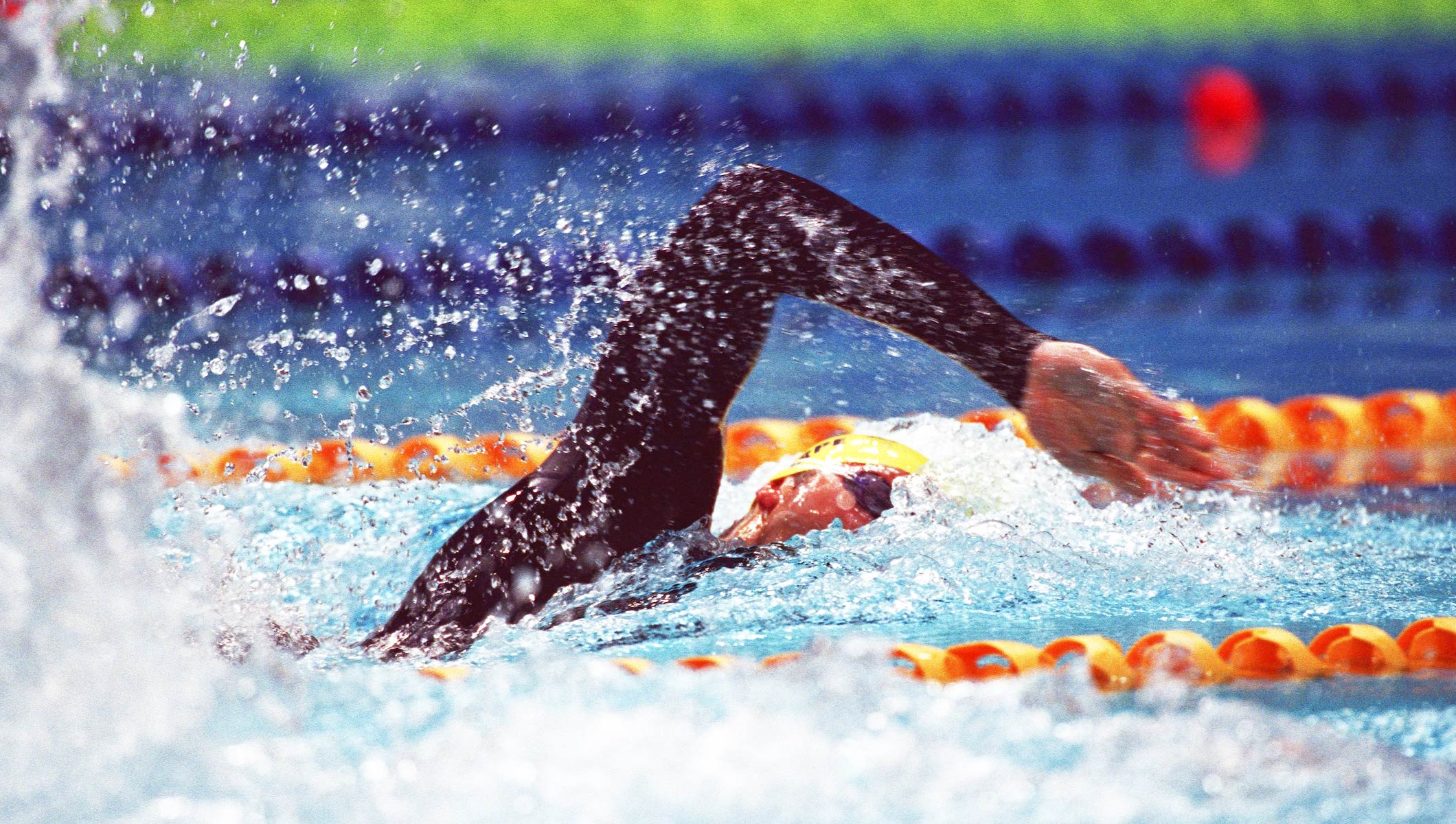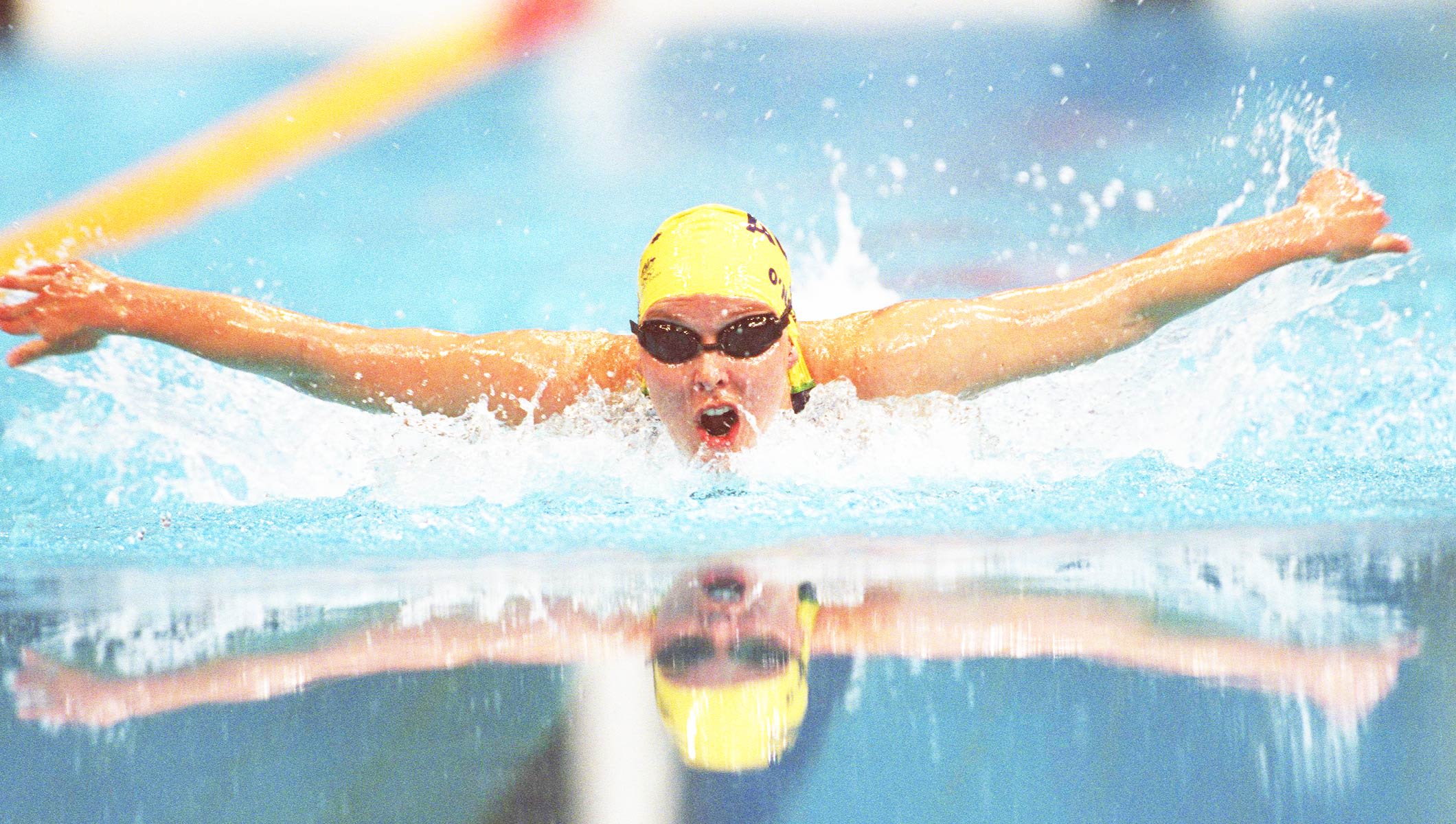Sydney 2000: a look back at the incredible atmosphere in the Aquatic Centre
In the Sydney Aquatic Centre, from 16 to 23 September 2000, the Australian swimmers enjoyed massive support from an enthusiastic home crowd. An inside account of the days when teenager Ian Thorpe and his team-mates were motivated by an enormous wave of support to produce a series of memorable performances at the Games of the XXVII Olympiad.
At Olympic Park in Homebush Bay, around 15 kilometres from the centre of Sydney, you had to walk up the Olympic Boulevard, go past the superb Olympic Stadium, cross Dawn Fraser Avenue and get to the Aquatic Centre to realise what was happening. No need to strain your ears to know what was going on, though, as the audience was making so much noise applauding the Australian swimmers’ performances each day. Meanwhile, in the heart of the city, outside the Circular Quay metro station, crowds gathered in front of the two giant screens during the first week of the Games to cheer on their champions.
Right from the start of the competitions, on 16 September, the 17,500 spectators chanted “Thorpey, Thorpey, Thorpey!” to accompany the exploits of the 17-year-old swimmer who was setting the 50-metre pool alight. Wearing a full bodysuit, Ian Thorpe began by dominating the final of the 400m freestyle from start to finish. “As soon as I walked out there, it was like a gladiator walking into the Colosseum, hearing the sheer noise of the crowd. I was ready to race,” he explained.
Already the world record-holder over this distance, the swimmer made full use of his home advantage (he was born and grew up in the Sydney suburb of Milperra). He won amidst the deafening cheers of the crowd, setting a new world record in the process (3.40:59) and taking 35 hundredths of a second off the Olympic record set in 1992 by Russian champion Yevgeny Sadovyi. That was the first of the 16 gold medals won by Australia at these Games.
Australia’s Ian Thorpe (extended)
Australia dethrones the US
But the atmosphere was about to get even more charged on this memorable day! The US team had never been beaten in the 4x100m freestyle relay since its inclusion on the programme in 1964 in Tokyo (the only men’s freestyle relay had previously been the 4x200m), making a total of seven consecutive victories, as the 4x100m was not on the programme of the Games in 1976 or 1980. Here, they announced their arrival in the heats by setting the best time (3:15.43), almost two seconds ahead of the Australian quartet. Gary Hall Jr poured fuel on the fire by announcing: “We will smash them like guitars.”
Anthony Ervin, Neil Walker, Jason Lezak and Hall lost no time in trying to prove their point. But the home crowd was there to support their team for the final, with Michael Klim in lane 5, and Ervin beside him in lane 4. Klim swam an incredible first leg, giving Australia a big lead and setting an individual 100m world record of 48.18. In the stands, you couldn’t hear yourself speak, with the spectators cheering themselves hoarse – but the volume was about to crank even higher!

The battle was fierce between Chris Fydler and Walker, and then between Ashley Callus and Lezak. Their furious strokes kept them neck and neck, and way ahead of the other competitors in this final. After his gold medal in the 400m, Ian Thorpe had to get back in the water, to swim the final leg against Hall. The American moved ahead, touching the wall well before Thorpe at 50m, and maintaining his lead over the second length. But when the crowd realised that Thorpe was gradually catching him up, the shouts of “Thorpey, Thorpey!” grew even louder. Over the final metres, the young star of the Australian team managed to overtake, and finished with a new world record of 3.13.67. The crowd went wild, as did Thorpe’s team mates on the starting block. To celebrate their win, they played air guitars as a friendly message to Hall.
“All the guys did a great job, including me,” said Klim. “It was the greatest feeling in my life.” “Amazing to have been part of that relay team,” added Callus. “I knew I mustn’t let the guys down. It’s an honour to represent your country,” commented Thorpe. And they all agreed how much the unstinting support of the crowd helped them to this historic win. “That medal belongs to them too,” said Klim.
A fantastic 4x200m and celebrations for Susie O’Neill
Thorpe was once again the star three days later for the final of the 4x200m freestyle relay, an event the Australians had won just once before, at the 1956 Games in Melbourne. The tone was set during the presentation of the teams, with the crowd cheering like mad as the Australian swimmers in lane four were announced. This was replaced by chants of “Thorpey!” as Thorpe swam the first leg and gave his team a good lead. And even as Klim, Todd Pearson and Bill Kirby continued to increase their lead, drawing “oohs” and “aahs” with each turn, the chants of “Thorpey” continued in the stands.
The Australians were imperious, winning by almost five seconds ahead of the Americans and, with a time of 7:07.05, beating the previous world record by almost four seconds. “It would have to be the best day of my life, the best hour, the best minute. To be able to dream and to fulfil it is the best thing an individual can do,” said Thorpe, who was now the idol of a whole country.
This 19 September was also one to cherish for Susie O'Neil! Australia’s women swimmers were less successful than their male counterparts at these Games, but in the Olympic 200m butterfly champion at Atlanta in 1996 they had a serious contender for the 200m freestyle title, as O'Neill was more than just “Madam Butterfly”. Spurred on by the crowd’s chants of “Susie, Susie, Susie!”, she went on to win, beating off the attacks of Slovakia’s Martina Moravcová to win by eight-hundredths of a second and setting off an ovation that could be heard far outside the Aquatic Centre.

Grant Hackett deprives Kieren Perkins of a hat-trick in the 1,500m
On 23 September, in the longest race, the 1,500m, the final would be a heart-breaking affair for the crowd in the Aquatic Centre. They had every reason to be supporting Kieren Perkins, the world and Olympic record-holder, who was looking for a hat-trick of wins over this distance after victories at the Games in Barcelona in 1992 and Atlanta in 1996. But his young compatriot, Grant Hackett, unbeaten over 1,500m since 1997, didn’t see things the same way. As he told the Sydney Morning Herald 20 years later: “I was almost a bit scared of my own country. Everybody loved Kieren and wanted to see him win three in a row. I was worried that people might hate me if I beat the guy.” This was clear from the crowd’s reaction when the two Australians, swimming in lanes 3 and 4, were presented in turn to the public: warm applause for Hackett, a big ovation for Perkins!
In the final, there would be no need for a photo finish to determine the winner: Hackett took the lead in the first 100m and never looked back. The spectators were finally delighted to see their two swimmers achieve a one-two finish, and the excitement levels increased during the final lengths: Hackett swam past Perkins each time, having turned well ahead of him. He went on to win in 14:48.33, five seconds ahead of the older man. America’s Chris Thompson, who took bronze, was even further behind. Congratulating Hackett in the water, Perkins murmured: “You deserve this.”
The Australians then gave just as much support to the two sets of women’s relay swimmers (4x100m and 4x200m), who both finished second behind their US counterparts, and then to Thorpe again (second in the 200m freestyle) and Susie O'Neill (second in the 200m butterfly), plus the other silver medallists, Klim (100m butterfly), Matt Welsh (100m breast stroke) and Leisel Jones (100m women’s breast stroke).
In the end, it was the American swimmers who won the most titles (14) and medals (33), but Australia achieved a historic result with 18 medals, five of them gold and nine silver. The incredible atmosphere in the Aquatics Centre had a lot to do with that.